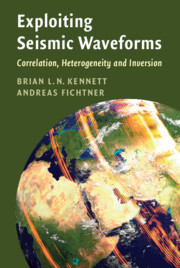Book contents
- Frontmatter
- Dedication
- Contents
- Preface
- 1 Introduction
- Part I Building the Seismic Wavefield
- Part II Correlation Wavefields
- Part III Interaction of Seismic Waves with Heterogeneity
- Part IV Inversion for Earth Structure
- 14 Inference for Structure
- 15 Gradient Methods for Nonlinear Inversion
- 16 Adjoint Methods and Sensitivity Analysis
- 17 Waveform Inversion of Event Data
- 18 Waveform Inversion of Correlation Data
- 19 New Directions
- Appendix Table of Notation
- Bibliography
- Index
19 - New Directions
from Part IV - Inversion for Earth Structure
Published online by Cambridge University Press: 16 November 2020
- Frontmatter
- Dedication
- Contents
- Preface
- 1 Introduction
- Part I Building the Seismic Wavefield
- Part II Correlation Wavefields
- Part III Interaction of Seismic Waves with Heterogeneity
- Part IV Inversion for Earth Structure
- 14 Inference for Structure
- 15 Gradient Methods for Nonlinear Inversion
- 16 Adjoint Methods and Sensitivity Analysis
- 17 Waveform Inversion of Event Data
- 18 Waveform Inversion of Correlation Data
- 19 New Directions
- Appendix Table of Notation
- Bibliography
- Index
Summary
This chapter addresses a range of topics that hold considerable promise for future developments. We start by considering nested-inversions that allow definition of heterogeneity across a wide range of length scales from local through regional to global. This is followed by discussion of adaptive numerical gridding, exploitation of data redundancy, the development of efficient random sampling methods for inversion, and the use of HamiltonianMonte-Carlo techniques for efficient searching of high-dimensional spaces.
Keywords
Information
- Type
- Chapter
- Information
- Exploiting Seismic WaveformsCorrelation, Heterogeneity and Inversion, pp. 428 - 455Publisher: Cambridge University PressPrint publication year: 2020
